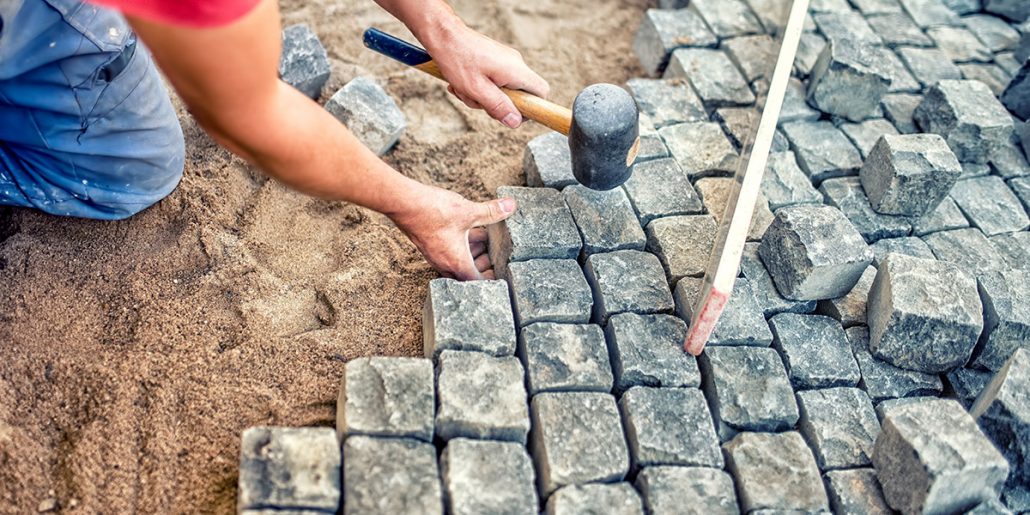Unlocking the Keys of Sustainable Stonework Building And Construction Practices for Eco-Friendly Structures
Among the myriad methods to environmentally friendly building, sustainable masonry construction stands out as a time-tested and sturdy approach that holds a riches of untapped capacity. From the selection of products to cutting-edge building and construction methods, the tricks to achieving sustainability within stonework building are multifaceted and appealing.
Benefits of Lasting Stonework Construction
Welcoming lasting stonework construction methods not just reduces environmental effect yet additionally offers lasting financial benefits to building contractors and neighborhoods. By utilizing products like recycled blocks, blocks, and stones, building contractors can substantially lower the carbon impact of their projects while promoting resource efficiency. Furthermore, lasting masonry building methods, such as correct insulation and thermal mass buildings, can boost energy effectiveness within structures, bring about minimized functional prices with time.
Furthermore, the toughness and strength of stonework frameworks add to long-term financial advantages. Buildings constructed using sustainable masonry techniques often need much less repair and maintenance, converting to set you back savings for home builders and residential property owners. The durability of stonework materials likewise makes sure that structures remain steady and safe, minimizing the demand for constant restorations or replacements.
Eco-Friendly Stonework Products
Making use of environment-friendly masonry materials is an essential step in the direction of improving the sustainability of construction techniques and reducing ecological influence while maximizing lasting economic advantages. Sustainable masonry materials are sourced, created, and made use of in a way that lowers total ecological impact. Lasting concrete obstructs integrate recycled aggregates and may feature improved insulation homes, adding to energy efficiency in buildings.
Furthermore, natural materials like adobe, rammed planet, and straw bundles offer excellent thermal mass buildings, lowering the need for home heating and cooling down power. These products are commonly in your area available, promoting local economies and reducing transportation-related carbon exhausts. By picking environmentally friendly masonry materials, building tasks can substantially minimize their environmental impact and add to the production of healthier, much more lasting constructed atmospheres.
Energy-Efficient Masonry Techniques
Energy performance plays a crucial function in enhancing the sustainability of stonework building and construction techniques. By executing energy-efficient masonry strategies, home builders can considerably reduce the total energy consumption of a structure, causing lower functional costs and a smaller ecological footprint. One vital energy-efficient stonework method is making use of thermal mass, which involves including dense products like concrete or brick right into the structure's structure to take in and store warm. This helps regulate indoor temperature levels, minimizing the need for mechanical home heating and cooling systems.

Advancements in Sustainable Stonework
Current innovations in sustainable masonry practices have actually produced innovative methods that are reshaping the construction sector. One such technology is the development of self-healing concrete, which uses germs installed within the concrete to heal splits autonomously. This breakthrough not only lowers upkeep costs but also boosts the durability of masonry structures, adding to their sustainability.
Another notable innovation is using recycled aggregates in masonry construction - masonry contractor. By integrating products such as crushed ceramic waste or recycled glass right into concrete mixes, building contractors can decrease the environmental impact of construction projects while keeping architectural integrity. This method not just draws away waste from garbage dumps yet additionally conserves natural deposits, making it a key development in sustainable masonry construction
In addition, the combination of digital style devices, such as Structure Information Modeling (BIM), is transforming the way masonry frameworks are prepared and created. BIM permits more precise calculations, reduced product wastefulness, and boosted power effectiveness, eventually causing even more sustainable structure techniques. These developments collectively symbolize an appealing future for sustainable masonry construction in the age of environment-friendly structures.
Future Trends in Stonework Sustainability
With the innovative strides made in lasting masonry methods, the future trends in stonework sustainability are poised to additional change the building industry. Among the essential fads forming the future of stonework sustainability is the go boosted integration of innovation. Advancements such as Structure Details Modeling (BIM) and virtual truth simulations are being utilized to optimize stonework construction procedures, bring about lowered product waste and improved energy performance in structures.
Additionally, the growth of unique lasting products is established to play site a significant duty in improving the eco-friendliness of stonework building and construction. masonry contractor. Technologies like self-healing concrete, recycled aggregates, and bio-based binders are getting grip for their capacity to lessen ecological impact while maintaining structural integrity

Conclusion
In final thought, sustainable masonry building methods offer various advantages for environmentally friendly structures. masonry contractor. Advancements in lasting stonework are continually being created to additionally improve the ecological efficiency of buildings.